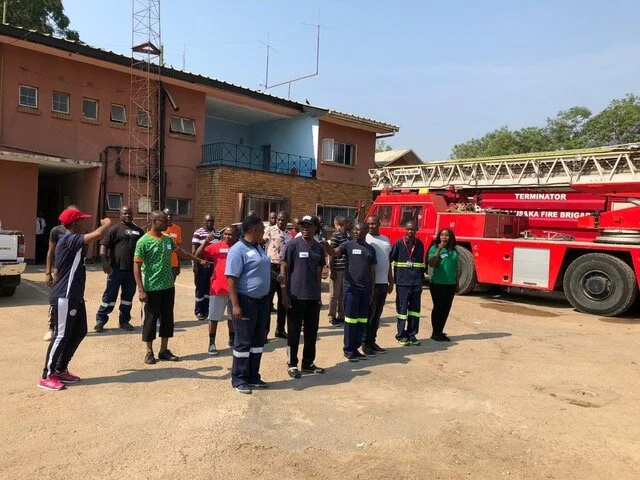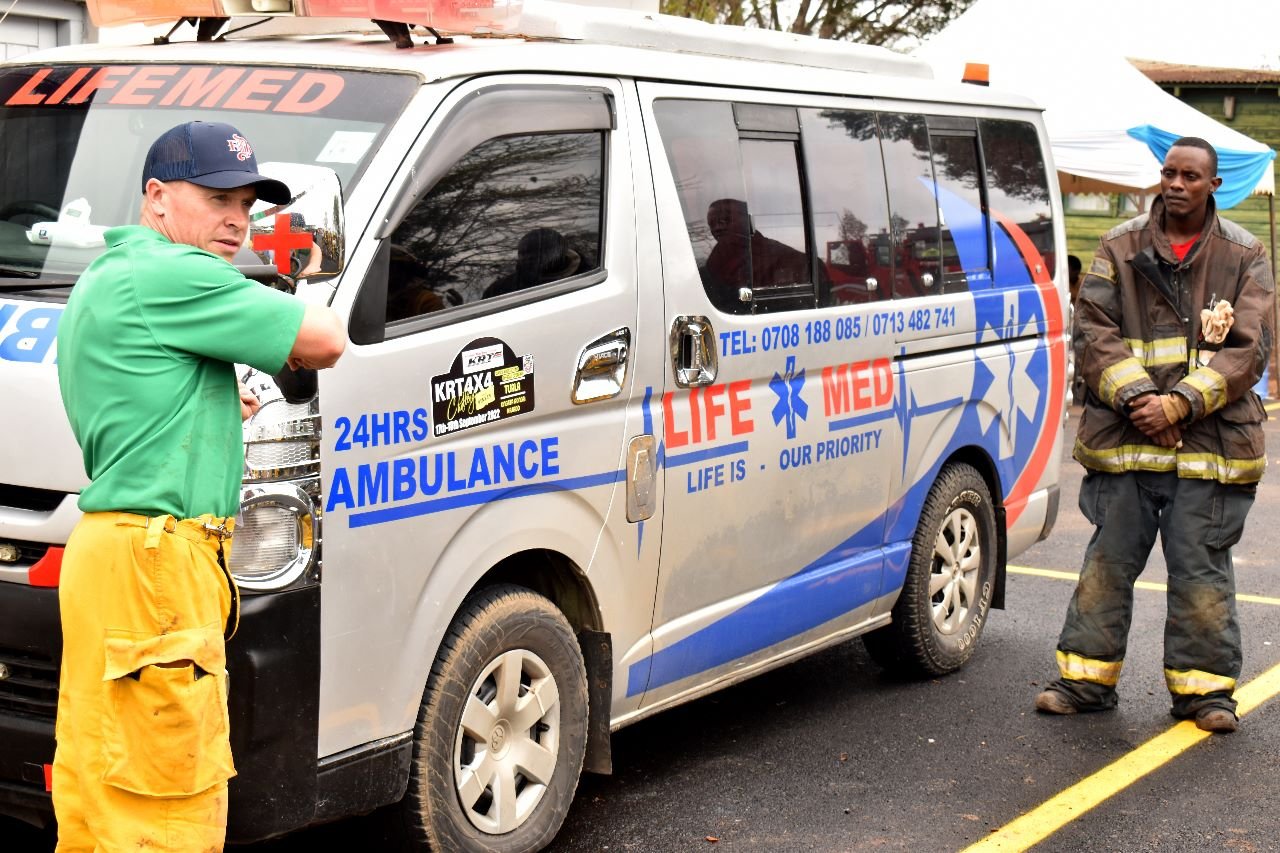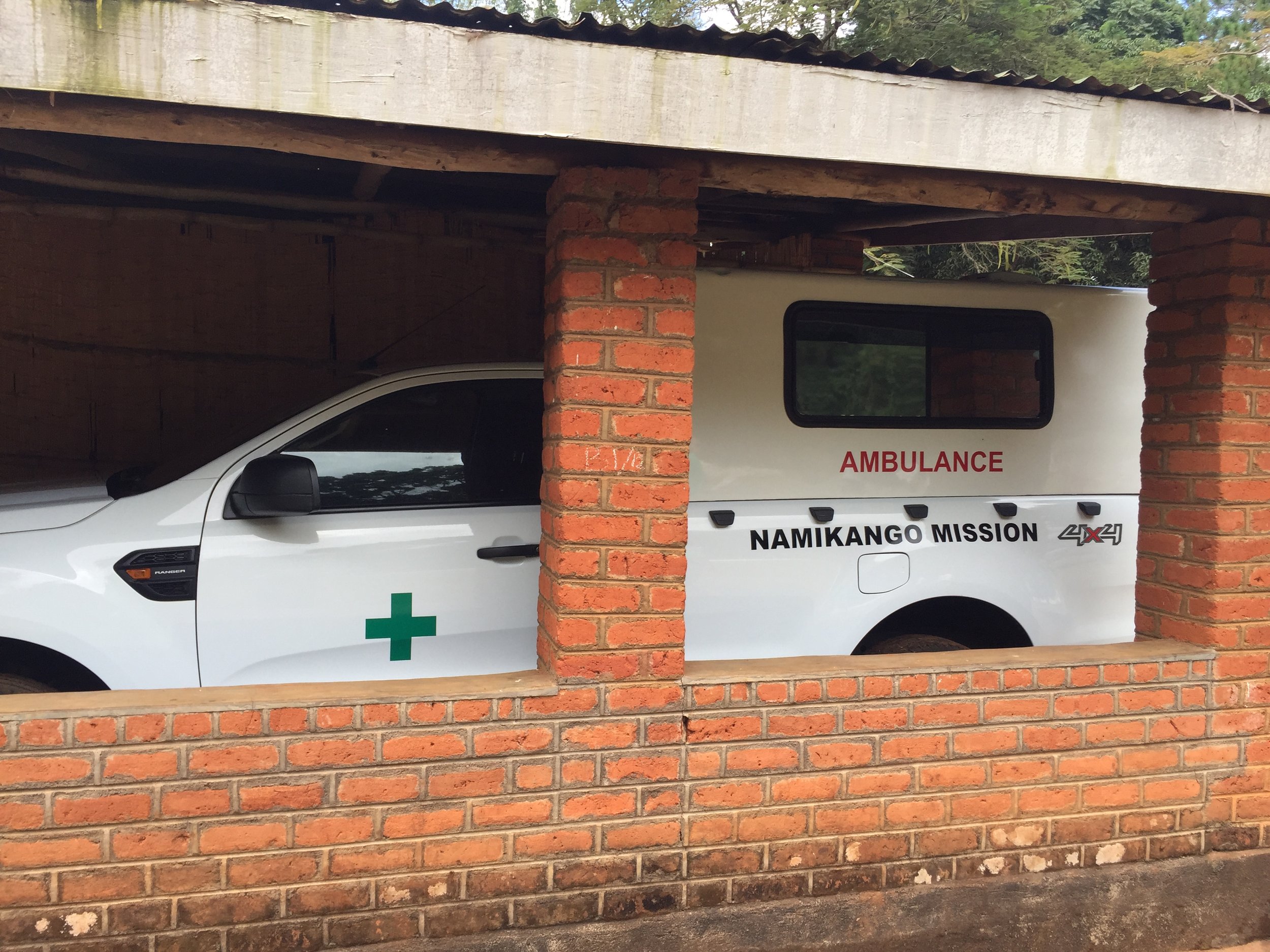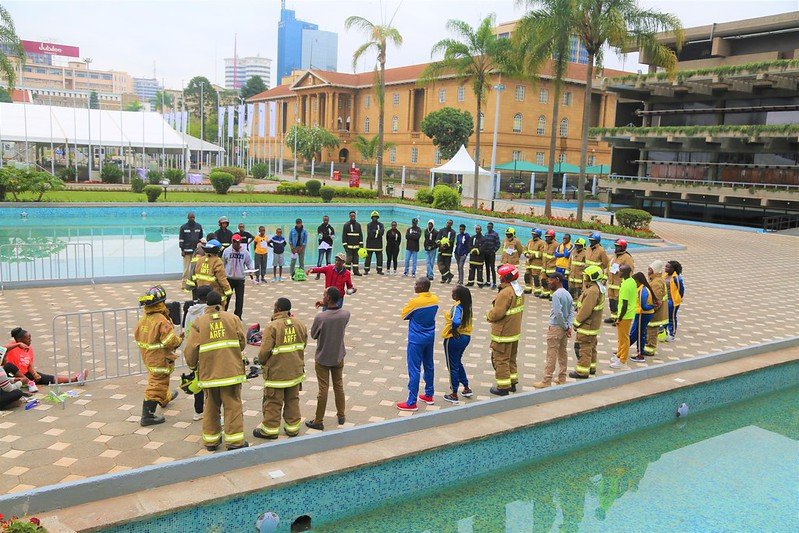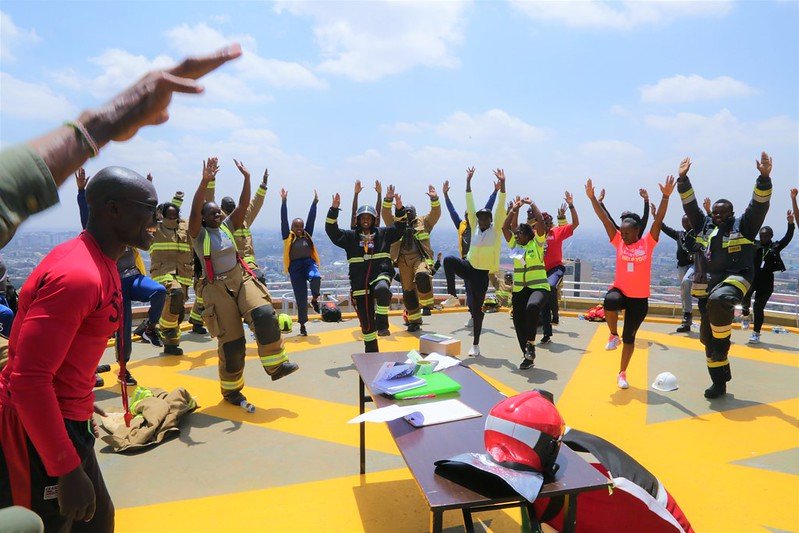We would like to recognize the different award winners from this year’s symposium to highlight the ever-growing fire service in Africa and the determination of first responders in Kenya and beyond.
Why should fire trucks and ambulances always show up for a medical emergency?
Why should fire trucks and ambulances always show up for a medical emergency?
By Kelvin from Swift Emergencies Response Unit - Kenya
When a call comes in at the call center, dispatchers often are not given precise or complete information. As such, units are dispatched on a worst-case scenario. To ensure the highest level of care, the closest fire engine station is dispatched and EMS sends an ambulance (staffed with two paramedics and/or EMT's).
No medical call is “routine.” Most require assessing the patient, obtaining their vital signs, providing oxygen therapy, and moving them, at a minimum. EMS may also need to place an advanced airway, administer drugs intravenously, or monitor cardiac conditions. All of these procedures are completed more efficiently when the appropriate amount of help is on scene. Efficient care is our goal, and efficient care often is the difference between life and death.
Unfortunately, units have no way of knowing what they will encounter on a call until they arrive. They work in a “what if” and “all risk” business. Responding to the unknown is public safety. The public can help by calling emergency numbers quickly when there is an emergency and providing details of the emergency. Emergency hotlines are your instant go-to when the need arises. It is important that you know the numbers to call to get assistance and keep a copy with you.
Ambulance Services and Its Importance in Society
Ambulance Services and Its Importance in Society
By: Kelvin from Swift Emergencies Response Unit - Kenya
Increase in medical ailments has led to the rise in hospitals and emergency medical services assisting patients who require emergency medical assistance at critical moments, helping them to reach the hospital on time thus saving their life.
Private and public ambulance transport services are operating in more numbers today as an inevitable service providing care to critical patients at crucial moments. In Kenya, ambulance operating centers are set up at every hospital and private EMS organization. These Ambulance operating centers function with adequate ambulance transport services to offer immediate medical care for patients. Private ambulance transport services depict a consistent rise in the growth curve each year offering non-emergency services unlike hospital ambulance transport services which primarily function for emergency needs. Some of the non-emergency services include shifting patients from one hospital to another, transporting patients for any scanning or laboratory services to the relevant facilities, or patients with any travelling disabilities in normal vehicles to hospitals for treatments.
Emergency ambulance services are usually equipped with adequate medical equipment and paramedical professionals. Sometimes, non-emergency ambulance transport services are also equipped with some basic medical aids and a para medical staff to cater the needs of immediate medical care to patients.
Let us discuss a few points about the pre-hospital medical professions - paramedics and emergency medical technicians (EMTs) who are the spine of ambulance transport services:
Paramedics or EMTs are first treating patients even before doctors (pre-hospital care) thus saving patients through immediate medical procedures ensuring the vitals stable before reaching hospitals for further treatments.
Paramedics and EMTs are trained healthcare professionals, authorized to attend patients with required medications and procedures based on their training level.
Education level, standards, functions and skills of paramedics and EMTs vary with countries. However. certain standard functionalities remain common such as being trained to practice CPR procedures for cardiac arrest patients, usage of defibrillators, certain analgesic, paralytics and sedative medications for pain control, first aid to treat burns, fractures, childbirth complications, spine injury, airway management, blood control etc.
One should respect the noble service of prehospital providers who form an integral part of ambulance services.
The youth of our nation should involve themselves in such noble service, joining community life saving teams and can considering a career as a paramedic or EMT.
The government could benefit from taking initiatives to support volunteer community first responders at the community level and to empower them to continue saving lives at the scene before qualified personnel arrives.
Kenya Stairclimb 2023
Kenya Stairclimb 2023
On September 16, 2023, firefighters gathered for a day of remembrance of fallen firefighters and a day of camaraderie and awareness of the fire service in Kenya.
Heels on Mountains collaborated with Africa Fire Mission for this year’s Annual Firefighter Stairclimb event in Kenya, which had a had a total of 65 participants! We are grateful to all the participants and sponsors of this event.
Heels on Mountains has continuously supported firefighters in Kenya since 2019, supporting 4 stairclimb events for firefighters at the Kenya International Conference Center . Thank you to everyone that participated: Mombasa County, Kenya Airports Authority, ICT Fire and Rescue, West Pokot County. We are grateful to individual Firefighters and EMT’s as well as supporters of First Responders.
Asanti sana. You helped Kenya be on the map as the only African country that commemorated the Twin Tower bombings with a stair climb activity.
Check out photos from the Kenya Stairclimb event here:
From Ideal to Real
By: Rabbi Howard A Cohen (Deputy Chief, ret.) AFM Virtual Training Coordinator
As first responders we are required to absorb an overwhelming quantity of data. As good as our intentions are to remember all that we are taught, the reality is that we forget details. This is why constant reviewing, drilling and periodic recertification is so important. Even with doing our best to keep our skills sharp and our knowledge base current, the reality is that we cannot possibly be experts in every situation we might encounter in the course of work. For example, though we may have a solid understanding of basic first aid principles, we are not doctors and therefore are limited to the extent that we can help a patient in the field. Even if we were trained to the level of a medical doctor, in the field far removed from a hospital facility, we would still be limited with what can do. We do not work in controlled environments or under ideal conditions. No matter what the situation or our skill level, our response is always on a spectrum that moves from the ideal to the real.
Every three years I re-certify as a wilderness first responder. Every three years I’m embarrassed to admit how much I’ve forgotten. Although I wish my memory was such that I was better at calling up a lot of details and data that I rarely ever use, I don’t worry about it. Why? Early on in my first responder career I was taught two important lessons. The first lesson is that an emergency response in the field will always be somewhere on the spectrum from the ideal to the real. As emergency responders we do the best that we can with the tools and knowledge that we have on the scene. This is what it means to move from the ideal to the real. Remember, as first responders, our objective is keep the patient alive long enough to get to advanced medical care. It is not our job, nor do we have the skills, to fix or heal patients. Our job is to stabilize, comfort, and transport our patients.
To do our job well as first responders we do not need a medical education. This brings me to the second important lesson I have learned in my career as a first responder: Pay special attention to the three big systems: circulatory, neurological and respiratory and do whatever you can do to keep them functioning. The vast majority of injuries to people are not life threatening. However, any significant trauma to one or more the three big systems has a high probability of being life threatening. If a person is bleeding, stop the bleeding. You do not need to know how to suture. You do not need to know how long to keep pressure on an open wound. You only need to know that you have to “plug” the hole where the bleeding is coming from. If your patient is not breathing you don’t need to know how to do a tracheotomy. You just need to know what to do to open her airway because if you can’t get your patient breathing she will die. Ideal to the real. Remember, it is not our job, nor do we have the skills, to fix or heal patients. Our job is to keep them alive and as comfortable as possible as we get them to advanced medical care.
As first responders we will always strive to respond with the very best of our abilities. That’s what we do. However, the reality is that we are generalists trained to respond to a mind boggling variety of emergency situations that always happen under less than ideal conditions. Ideally, we might want to respond in a certain way, in reality, the situation and our knowledge level will determine our response. Therefore, it is important to remember that emergency medical responses in the field always fall somewhere on the ideal to real spectrum. Our goal is to do the best that we can with the tools and knowledge we have on the scene.
About the author:
Howard joined the fire service in 2001 to serve as chaplain of his local fire department. Twenty years later he retired as his department's deputy chief. Howard planned to join Africa Fire Mission on a trip to Zambia but Covid interrupted those plans. He has since traveled twice to Kenya with AFM. He is regular AFM blog contributor and webinar instructor. Outside of the fire service, Howard serves as rabbi to Congregation Shirat Hayam in Duxbury MA. He also has a leadership and mental fitness coaching practice called code3leadershipcoaching.

